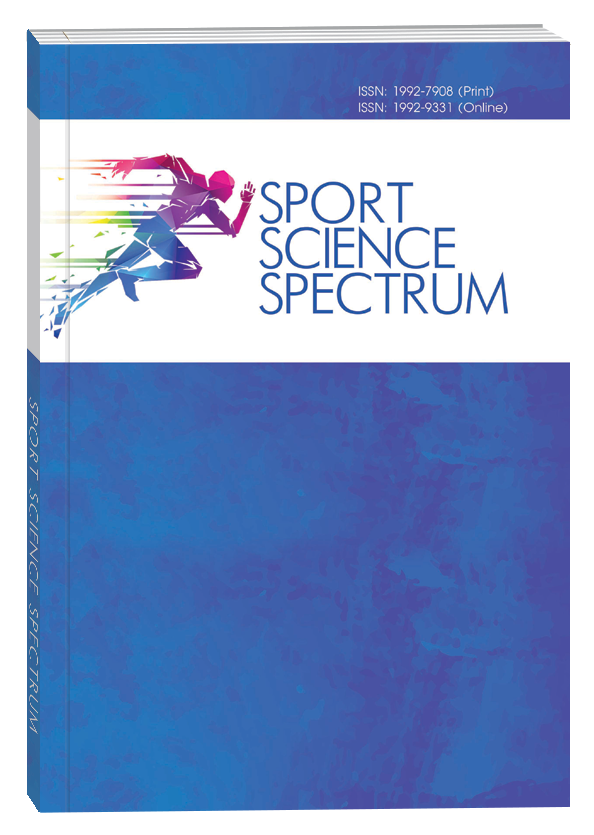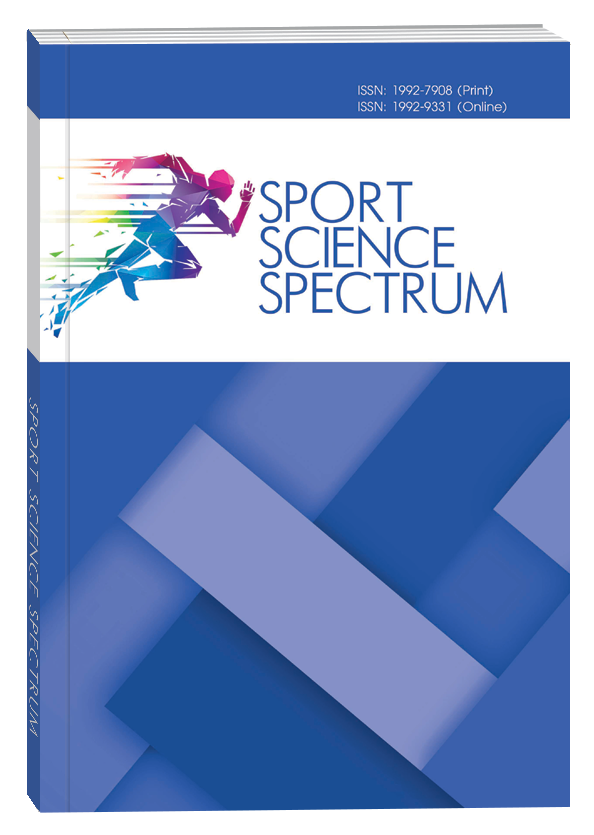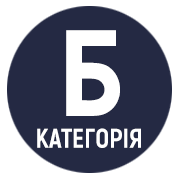CENTRALIZED TRAINING OF THE NEAREST RESERVE OF NATIONAL TEAMS IN GAME SPORTS (ON THE BASIS OF BASKETBALL)
DOI:
https://doi.org/10.32782/spectrum/2025-1-3Keywords:
sports reserve, long-term training, competitive activity, structural formations of the training process, technical and tactical training, game team sportsAbstract
The article substantiates the importance of using a centralized approach in the process of training the closest reserve of national teams in game sports under modern conditions of globalization and commercialization of sports. The historical experience of implementing centralized training of youth national teams in different countries of the world and the effectiveness of using a concentrated intensive approach for countries with limited resources are considered. Objective: Systematize the key factors of provision and substantiate the importance of centralized training of the nearest reserve of national teams in game sports. Methods: Analysis of scientific and methodological literature and data of the Internet, interview, content analysis of documents, generalization. Results. The conceptual directions of preparation of the nearest reserve of national teams are: 1) concentration of promising basketball players in each age category in single training centers; 2) attracting leading coaches (including foreign specialists) to work with promising players; 3) unification of training programs and increasing the number of joint training sessions for cadet and youth national teams (U 14–U 20); 4) progressive dynamics of the number of international matches for cadet and youth national teams (U 14–U 20). Systematized key tasks, support components and principles of multi-year training of the nearest national team reserve, which provide a step-by-step solution to the main strategic task – to prepare a high-quality reserve for the country’s main team. Conclusions. The effectiveness of the preparation of the nearest reserve of national teams in modern conditions of globalization and professionalization of sports will largely depend on the ability of a specific country to mobilize the existing internal potential, taking into account the objectively existing realities of the functioning of sports in the state, as well as the dynamic consideration of existing global trends in the development of sports, the ability to the operational implementation of the leading developments of foreign specialists in combination with the long-term achievements and traditions of the domestic “sports school”. The increase in the level of competition on the international sports arena in many game team sports and the negative dynamics of the performances of Ukrainians teams require increased attention to the issues of systematic training in reserve sports. There is an urgent need to create a kind of institute of national teams, the purpose of which should be aimed at continuous and high-quality training of athletes for the main team of the country.
References
1. Безмилов М. М., Шинкарук О. А. Тенденції та актуальні проблеми підготовки баскетболістів високого класу в сучасних умовах глобалізації та популяризації баскетболу. Фізична культура, спорт та здоров’я нації. 2020; 28: 112–131.
2. Безмилов М., Шинкарук О., Murphy T. Підготовка спортивного резерву та відбір баскетболістів в США. Теорія і методика фізичного виховання і спорту. 2020; 3: 10–20.
3. Безмилов М. Періодизація підготовки спортсменів в ігрових видах спорту: фактори впливу та перспективні напрями подальшого розвитку специфічної системи знань. Теорія і методика фізичного виховання і спорту. 2022; 3: 3–19. DOI: https://doi.org/10.32652/tmfvs.2022.3.3-19.
4. Борисова О., Шутова С., Нагорна В., Шльонська О., Серебряков О., Митько А. Характеристика змагальної діяльності збірних команд України зі спортивних ігор на міжнародній арені. Спортивна наука та здоров’я людини: наукове електронне періодичне видання. 2020; 2(4): 27–37.
5. Борисова О., Шутова С., Нагорна В., Шльонська О. Сучасні підходи удосконалення діяльності висококваліфікованих спортсменів у спортивних іграх. Теорія і методика фізичного виховання і спорту. 2020; 2:15–22.
6. Мітова О. Динаміка розвитку командних спортивних ігор як підґрунтя формування сучасної системи контролю у командних спортивних іграх. Фізична культура, спорт та здоров’я нації. 2022; 13(32): 198–211.
7. Николаенко В.В. Рациональная система многолетней подготовки футболистов к достижению высшего спортивного мастерства [монография]. Киев: Саммит-книга; 2014. 336 с.
8. Платонов В. Н. Система подготовки спортсменов в олимпийском спорте. Общая теория и ее практические приложения: учебник: Киев: Олим- пийская лит.; 2015. Кн1. 608 c.
9. Сушко Р. О. Особливості підготовки баскетболістів в умовах дії чинників глобалізації спорту вищих досягнень. Науковий часопис «Науково-педагогічні проблеми фізичної культури / фізична культура і спорт» 2017; 2 (83): 103–6.
10. Arede J., Ferreira A., Gonzalo-Skok O., Leite N. Maturational development as a key aspect in physiological performance and national-team selection in elite male basketball players. Int. J. Sports Physiol. Perform. 2019. doi: 14 902–910. 10.1123/ijspp.2018-0681.
11. Balyi I., Way R., Higgs C. Long-term athlete development. Human Kinetics; 2013. 286 p.
12. Bezmylov M., Shynkaryk O., Byshevets N., Gan Qi., Shao Zhigong. Morphofunctional characteristics of basketball players with different roles as selection criteria at the stage of preparation for higher achievements. Physical Education Theory and Methodology. 2022; 22(1): 92–100.
13. Bezmylov M., Shynkaruk O., Griban G., Semeniv B., Yudenko O., Lytvynenko A., Otroshko O., Kholchenkova N., Kurtova H., Kostenko M., Osmanova A. Peculiarities of physical fitness of 17-20 years old basketball players taking into account their playing role. International Journal of Human Movement and Sports Sciences. 2022; 10(6): 1163–1172.
14. Bompa T. O., Buzzichelli C. A. Periodization: Theory and methodology of training. 6th editional. Champaign, USA: Human Kinetics; 2018. 394 p.
15. Bonal J., Jiménez SL., Lorenzo A. The talent development pathway for elite basketball players in China. Int. J. Environ. Res. Public Health. 2020; 17: 5110://doi.org/10.3390/ijerph17145110
16. Buceta J. М., Mondoni M., Avakumovic A., Killik L. Basketball for young players. Guidelines for coaches. Madrid: FIBA; 2000. 358 р.
17. Burgess D. J., Naughton G. A. Talent development in adolescent team sport: A review. International Journal of Sports Psychology & Performance. 2010; 5(1): 103–116.
18. Capranica L., Millard-Stafford M. L. Youth sport specialization: How to manage competition and training? International Journal of Sport Physiology&Performance. 2011; 6(4): 572–579.
19. Lamontagne A. M. The Long-term development of basketball athletes. [Dissertation]. Porto. Faculdade de desporto. Univeridade do Porto; 2013. 114.
20. Lambert M. I, Mujika I. Physiology of exercise training. In:
21. Hausswirth C., Mujika I., eds. Recovery for Performance in Sport.
22. Champaign, I. L.: Human Kinetics; 2013:3–8
23. Lambert M. I., Mujika I. Physiology of exercise training. In:
24. Hausswirth C., Mujika I., eds. Recovery for Performance in Sport.
25. Champaign, I. L.: Human Kinetics; 2013:3–8
26. Lambert M. I., Mujika I. Physiology of exercise training. In:
27. Hausswirth C., Mujika I., eds. Recovery for Performance in Sport.
28. Champaign, I. L.: Human Kinetics; 2013:3–8
29. Marković D. Physical preparation youths national teams of Serbia. 2020. available from: https://www.youtube.com/watch?time_continue =18&v=4O9JVOseQhQ&feature=emb_logo
30. Oliveira R., Martins A., Moreno-Villanueva, Brito J. P., Nalha M., Rico-Gonzalez M., Clemetne F. M. Reference values for external and internal training intensity monitoring in professional male soccer players: A systematic review. International journal of sports science & coaching. 2022. https://doi.org/10.1177/17479541211072966.





